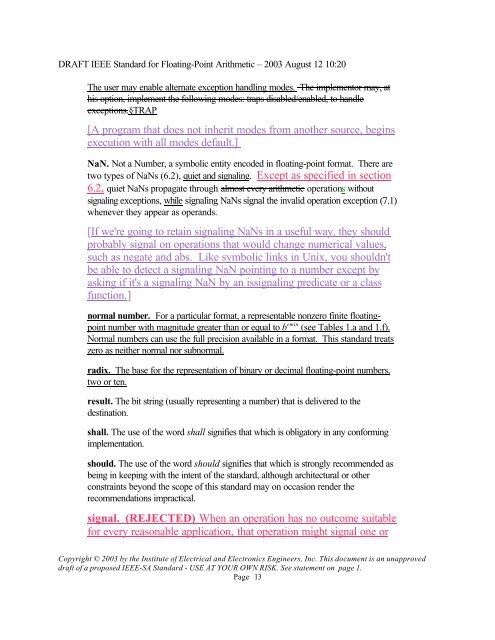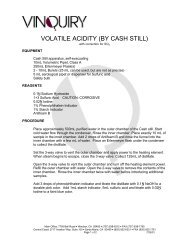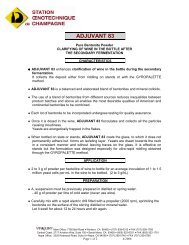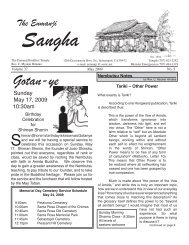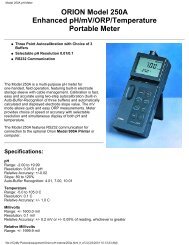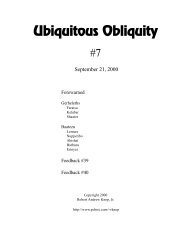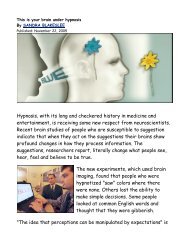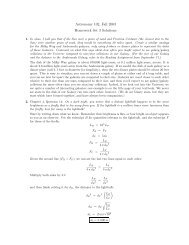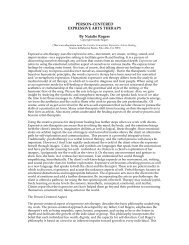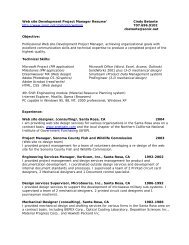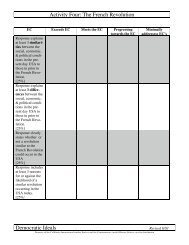DRAFT IEEE Standard for Binary Floating-Point Arithmetic - Sonic.net
DRAFT IEEE Standard for Binary Floating-Point Arithmetic - Sonic.net
DRAFT IEEE Standard for Binary Floating-Point Arithmetic - Sonic.net
Create successful ePaper yourself
Turn your PDF publications into a flip-book with our unique Google optimized e-Paper software.
<strong>DRAFT</strong> <strong>IEEE</strong> <strong>Standard</strong> <strong>for</strong> <strong>Floating</strong>-<strong>Point</strong> <strong>Arithmetic</strong> – 2003 August 12 10:20<br />
The user may enable alternate exception handling modes. The implementor may, at<br />
his option, implement the following modes: traps disabled/enabled, to handle<br />
exceptions.§TRAP<br />
[A program that does not inherit modes from another source, begins<br />
execution with all modes default.]<br />
NaN. Not a Number, a symbolic entity encoded in floating-point <strong>for</strong>mat. There are<br />
two types of NaNs (6.2), quiet and signaling. Except as specified in section<br />
6.2, quiet NaNs propagate through almost every arithmetic operations without<br />
signaling exceptions, while signaling NaNs signal the invalid operation exception (7.1)<br />
whenever they appear as operands.<br />
[If we're going to retain signaling NaNs in a useful way, they should<br />
probably signal on operations that would change numerical values,<br />
such as negate and abs. Like symbolic links in Unix, you shouldn't<br />
be able to detect a signaling NaN pointing to a number except by<br />
asking if it's a signaling NaN by an issignaling predicate or a class<br />
function.]<br />
normal number. For a particular <strong>for</strong>mat, a representable nonzero finite floatingpoint<br />
number with magnitude greater than or equal to b emin (see Tables 1.a and 1.f).<br />
Normal numbers can use the full precision available in a <strong>for</strong>mat. This standard treats<br />
zero as neither normal nor subnormal.<br />
radix. The base <strong>for</strong> the representation of binary or decimal floating-point numbers,<br />
two or ten.<br />
result. The bit string (usually representing a number) that is delivered to the<br />
destination.<br />
shall. The use of the word shall signifies that which is obligatory in any con<strong>for</strong>ming<br />
implementation.<br />
should. The use of the word should signifies that which is strongly recommended as<br />
being in keeping with the intent of the standard, although architectural or other<br />
constraints beyond the scope of this standard may on occasion render the<br />
recommendations impractical.<br />
signal. (REJECTED) When an operation has no outcome suitable<br />
<strong>for</strong> every reasonable application, that operation might signal one or<br />
Copyright © 2003 by the Institute of Electrical and Electronics Engineers, Inc. This document is an unapproved<br />
draft of a proposed <strong>IEEE</strong>-SA <strong>Standard</strong> - USE AT YOUR OWN RISK. See statement on page 1.<br />
Page 13


